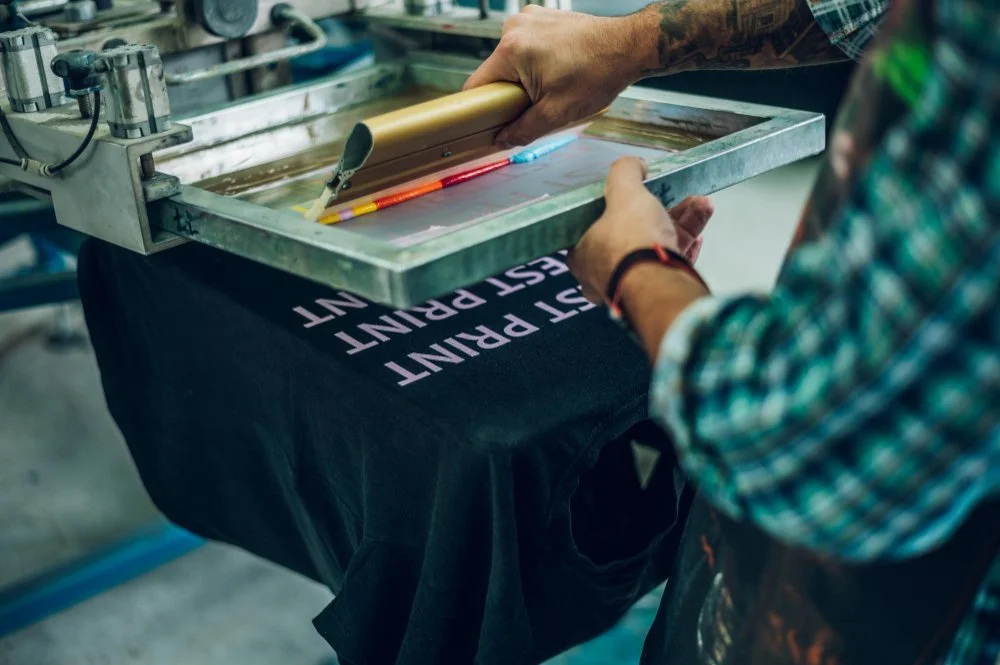
Custom screen printed shirts have become one of the most recognizable forms of wearable expression. From music festivals and university events to sports teams and community groups, these shirts serve as both a functional garment and a medium for creativity. Unlike mass-produced clothing with generic prints, custom designs allow individuals and organizations to convey specific messages, aesthetics, or identities. Understanding the background, techniques, and cultural relevance of screen printing helps to appreciate why it continues to be a leading choice for custom apparel.
Historical Roots of Screen Printing
The origins of screen printing stretch back over a thousand years. Early forms of the technique can be traced to China during the Song Dynasty, where artisans used silk mesh to transfer designs onto fabric. The method gradually spread to Japan and other regions, eventually making its way to Europe in the late Middle Ages. In the 20th century, the process was adapted for commercial use and became particularly popular in the fashion and advertising industries.
One of the most influential moments for screen printing in modern times came through the art world. Pop artist Andy Warhol famously used the technique in the 1960s, bringing it into mainstream recognition. His colorful, repeated images demonstrated how screen printing could be both artistic and industrial, bridging two worlds. This artistic heritage still influences how custom shirts are viewed today—not only as clothing but also as canvases for ideas.
How the Process Works
Screen printing, at its core, is a stencil-based printing method. A fine mesh screen is prepared with a stencil of the desired design. Ink is then spread across the screen, and a squeegee is used to push the ink through the open areas of the stencil onto the fabric beneath. Each color in the design requires a separate screen and layer of printing, which explains why intricate, multi-colored prints demand more time and precision.
The technique offers several benefits. First, the resulting prints are highly durable, with colors that withstand repeated washing and wear. Second, the vibrancy of screen printed inks makes designs stand out more boldly than many other printing methods. Lastly, the process allows for flexibility in design size and placement, whether a small logo over the chest or a full graphic across the back.
Applications and Uses
Custom screen printed shirts are widely used in social, cultural, and professional contexts. Schools and universities often use them to promote unity during events, while sports teams rely on them for both uniforms and fan merchandise. Nonprofit organizations utilize them as tools for awareness campaigns, giving participants a sense of belonging while spreading messages.
Another important use lies in the creative and personal realm. Independent artists often design limited runs of screen printed shirts, turning them into wearable artworks. Families create them for reunions, while friends print them for travel groups or special celebrations. The accessibility of the process has helped screen printing become a part of everyday life.
Advantages Over Other Methods
Compared with digital printing, embroidery, or heat-transfer methods, screen printing maintains a distinct identity. While digital printing excels at producing detailed images quickly, screen printing’s inks bond more deeply with fabric fibers, giving a longer-lasting result. Heat transfers may fade or crack over time, but screen printed graphics retain their sharpness for years. Additionally, when producing a large quantity of shirts, screen printing can be more efficient, since once the screens are set, multiple copies can be made in quick succession.
Cultural and Social Significance
Beyond the technical aspects, custom screen printed shirts carry social and cultural meaning. Wearing a shirt with a specific design often signals belonging—to a group, a cause, or an identity. A single shirt can spark conversation, make a political statement, or commemorate a shared experience. In this way, screen printing goes beyond decoration to serve as a form of communication.
Furthermore, the medium supports sustainability when done thoughtfully. Reusable screens, water-based inks, and organic cotton shirts have allowed many practitioners to reduce environmental impact. Community-based workshops and studios also use screen printing as an educational tool, teaching participants not only how to create a shirt but also how to express themselves through art.
Looking Ahead
Although new technologies continue to emerge in textile printing, screen printing remains a classic method that blends artistry, tradition, and durability. It adapts well to trends while maintaining its timeless qualities. As more individuals and organizations seek ways to express identity through wearable design, custom screen printed shirts will likely continue to thrive as both a creative outlet and a practical solution.






